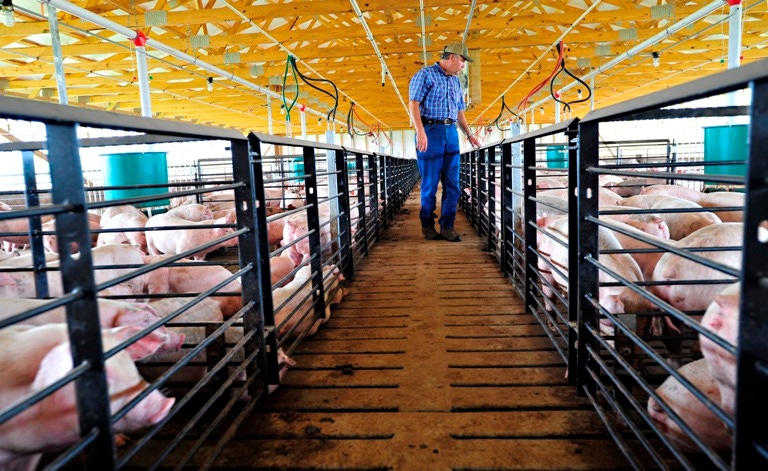The week of Sept. 10, 2012 might have been the worst week for the hog industry in years. As I recall, we harvested over 2.4 million head that week and took the Iowa/Southern Minnesota base price below $64/cwt. for the first time since November 2010. Omaha corn that week averaged over $7.75/bu. and soybean meal was near $550/ton. Operating losses were $50 to $60/head for many producers. I hate to drag everyone through that scenario, but I do it to raise a question.
October 22, 2012

The week of Sept. 10, 2012 might have been the worst week for the hog industry in years. As I recall, we harvested over 2.4 million head that week and took the Iowa/Southern Minnesota base price below $64/cwt. for the first time since November 2010. Omaha corn that week averaged over $7.75/bu. and soybean meal was near $550/ton. Operating losses were $50 to $60/head for many producers.
I hate to drag everyone through that scenario, but I do it to raise a question. Move forward to the week of Oct. 15. Slaughter numbers were still relatively high for this time of year. We harvested just shy of 2.4 million head last week. Preliminary market weight data indicates barrows and gilts were the same carcass weight on average – 200 lb. The Iowa/southern Minnesota base price paid for pigs this week was $82.22/cwt., carcass, bringing revenue of $164 or $36/head higher than the week of Sept. 10. What is the cause of this market rally – if you can call it that? Is it due to producers pulling pigs forward and creating slaughter peak numbers earlier than normal, better demand or demand outlook, or a USDA report indicating that the bubble in pig numbers is a seven- to eight-week surge in pigs coming to market?
Based on the last USDA Hogs and Pigs report, the Sept. 1, 2012 inventory of hogs over 180 lb. was up 4.5% from the prior report, which is pretty close to where we have been on average for harvest in the past seven weeks. If the numbers prove out through the year-end, slaughter numbers should run quite close to year-ago levels, up 0.6% from late October through November, then down 1.2% in December and January.
It is always difficult to get a significant rally in this period of the year, but the losses have tempered a great deal and the pork cutout continues to show strength.
Lower Market Weights
The pork industry has done a great job of keeping market weights lower. The impact of lower market prices coupled with a short corn crop has continued to pressure producers to keep marketings current. The significance is with carcass weights that are averaging 2 lb. lower than a year ago, which means we produced 4.8 million pounds less pork (1%) compared to a year ago. I think the potential exists and the incentive is present to double this effect by the end of November or early December when market weights on barrows and gilts typically peak. Last year that peak was at 206 lb., 4 lb. heavier than today’s pigs.
Managing Volatility
Much of the volatility we have seen this fall indicates the need for good risk management going forward. The fact that there were opportunities to lock in good profits for 2012 early in the year tells me there has to be a disciplined approach to risk management. Although expectations were high for a big crop and cheaper corn, the margins were at or near historically high levels and at least should have been considered. In the near future, I suspect that there will be good opportunities to lock in margins for much of 2013. Developing a disciplined approach to understanding forward costs and opportunities relative to historical profits is imperative. Many of our clients have very good systems in place to evaluate the forward-looking strategies and the results have been quite impressive. Issues that bear watching in the near term include:
1) The European Union (EU)-27 and anticipated reductions in the breeding herd due to housing regulations;
2) Moisture across the Corn Belt through the fall and how much winter wheat will be planted in the southern Corn Belt;
3) Ethanol prices relative to corn prices, and
4) Slaughter weights on barrows and gilts in the next 30 days.
You May Also Like



